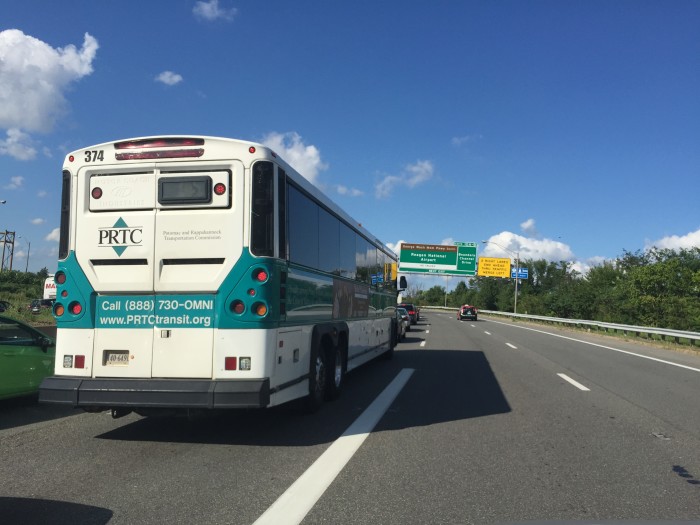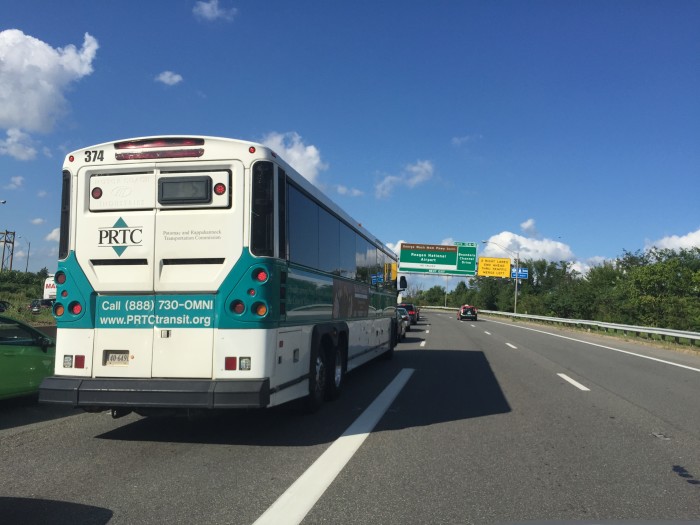Improving Northern Virginia Transportation | The Moyers Team

The commuter buses of OmniLink and OmniBus service 7,400 passengers a day, their cross-county services 1,900 a day and their local bus routes service 3,700 residents a day. The commuter services cover 13 routes and the local services cover six routes. There is a $9 million annual shortfall in revenue for these services. It will be a big loss in the lives of commuting Prince William County residents if the Potomac Rappahannock Transportation Commission decides to terminate these services in 2016.
I urge citizens in Northern Virginia to ask questions from transportation officials at all levels of government. If development in Northern Virginia will push forward during our lifetime, we can’t settle for planning which provides an adequate 2012 regional transportation system in 2040. Listed below are transportation organizations representing the future of Northern Virginia transportation planning, regional commuting, and quality of life.
- Citizens Advisory Committee (CAC): 15 members provide citizen viewpoints for long-term regional transportation policy to the Transportation Planning Board.
- Federal Highway Administration (FHWA): Responsible for highway regulations related to metropolitan area transportation planning.
- Federal Transit Administration (FTA): Responsible for public transit concerns of metropolitan transportation planning.
- National Capital Planning Commission (NCPC): This is a federal agency which provides guidance for transportation issues on federal land in the national capital region. The overdue improvements of Route 29 (Lee Highway) through Manassas National Battlefield Park in Prince William County involve the NCPC.
- Northern Virginia Transportation Authority (NVTA). Responsible for advocating the transportation needs of Northern Virginia to state and federal government officials responsible for transportation project approval and funding. The NVTA also works with jurisdictions in Northern Virginia to improve air quality, and develop a transportation plan for Northern Virginia.
- Northern Virginia Transportation Commission (NVTC): Serves the counties of Arlington, Fairfax, & Loudoun, and the cities of Alexandria, Fairfax, & Falls Church. The NVTC is one of two owners of the Virginia Railway Express (VRE). The NVTC also coordinates public transit policies in Northern Virginia, and appoints members to the Washington Metropolitan Area Transit Authority (WMATA).
- Potomac and Rappahannock Transportation Commission (PRTC): Provides local transit service in Prince William & Stafford counties, and the cities of Fredericksburg, Manassas, & Manassas Park. The PRTC is also an owner of the Virginia Railway Express.
- National Capital Region Transportation Planning Board (TPB): Members of this board include local officials, representatives of state transportation agencies, state legislators, the Washington Metropolitan Area Transit Authority, and others. The purpose of the Transportation Planning Board is to bring together regional decision makers to coordinate the planning and funding of future transportation projects in the region. The TPB develops a Regional Transportation Priorities Plan to find and agree on problems facing the region. The TPB is part of the Washington Metropolitan Council of Governments (WMCG). Click here for WMCG publications related to future short-term (six years) transportation projects, and over 750 long-term projects between 2012-2040.
- Virginia Department of Rail and Public Transportation (VDRPT): Provides technical support of rail initiatives. This includes supporting the Virginia Railway Express and Amtrak. Both the Virginia Department of Transportation, and the VDRPT report directly to the Virginia Secretary of Transportation, Sean Connaughton. He is an experienced federal and state transportation official who previously served on the Metropolitan Washington Council of Governments, Northern Virginia Transportation Authority, and several other regional transportation boards and commissions. I observed his work as the Chairman of the Board of County Supervisors in Prince William County, and he was consistently a smart problem solving politician with forward vision above and beyond other local officials. If there is one person who could change the history of sluggish regional transportation development in Northern Virginia, he is it. If Mr. Connaughton eventually serves Virginia in the U. S. House of Representatives or U. S. Senate, I think he would have the intellectual ability, and political influence necessary to advance highway and mass transit funding for Northern Virginia.
- Washington Metropolitan Area Transit Authority (WMATA): Metrorail, Metrobus, & MetroAccess.
The agencies listed above only represent the regional transportation planning organizations for Northern Virginia. The list also involves other federal agencies, and organizations representing the interests of the District of Columbia and Maryland. All of these government agencies working together for a common goal makes me wonder if cooperation and communication problems of so many agencies put the Northern Virginia transportation network 30 years behind to date. The last 10 years of highway construction in Northern Virginia have given us progress, and anticipated growth rates in Northern Virginia will require the completion of all mass transit proposals in the 2040 plan. I’ll be 75 in 2040. I will be surprised if the transportation network in 2040 includes the present day visions of a 2040 Northern Virginia transportation system which includes mass transit reaching the far suburbs. If I’m not dead by then, I’ll be surprised, and hopefully retired.
The Author: Dwayne Moyers is a Northern Virginia Realtor and life-long resident of Northern Virginia. He works with his wife Maryanne Moyers. His strong points do not include waiting in lines or sitting in rush hour traffic on Northern Virginia highways.


